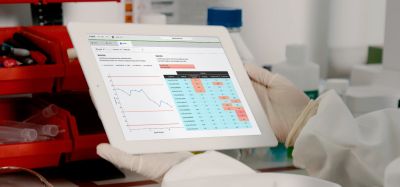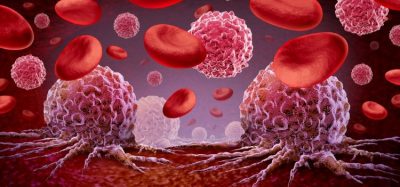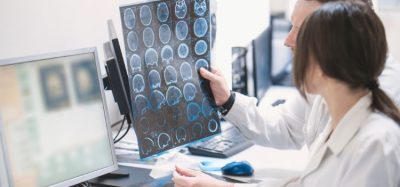Thermogelling nanoemulsion enhances drug loading of hydrophobic APIs
Posted: 8 June 2021 | Hannah Balfour (European Pharmaceutical Review) | No comments yet
Using a new formulation technique, researchers were able to more than double drug loading of a hydrophobic active pharmaceutical ingredient in tablets. Thus, the new formulation method may lead to smaller pills delivering the same therapeutic benefit.
![MIT chemical engineers have devised a new way to formulate hydrophobic drugs by turning them into a nanoemulsion, which can be poured into a mold and dried into tablets. The nanoemulsion can also be used to form small particles, seen in the vials [Credit: Felice Frankel].](https://www.europeanpharmaceuticalreview.com/wp-content/uploads/MIT-HYDROPHOBIC-DRUGS-nanoemulsion-750x500.jpg)
![MIT chemical engineers have devised a new way to formulate hydrophobic drugs by turning them into a nanoemulsion, which can be poured into a mold and dried into tablets. The nanoemulsion can also be used to form small particles, seen in the vials [Credit: Felice Frankel].](https://www.europeanpharmaceuticalreview.com/wp-content/uploads/MIT-HYDROPHOBIC-DRUGS-nanoemulsion-750x500.jpg)
MIT chemical engineers have devised a new way to formulate hydrophobic drugs by turning them into a nanoemulsion, which can be poured into a mold and dried into tablets. The nanoemulsion can also be used to form small particles, seen in the vials [Credit: Felice Frankel].
Chemical engineers have devised a novel process for incorporating hydrophobic active pharmaceutical ingredients (APIs) into tablets or other drug formulations such as capsules and thin films. Their technique, which involves creating a nanoemulsion of the drug and then crystallising it, allowed them to load more drug into each tablet and thus could be used to make smaller dosage forms, making swallowing of tablets easier and enhancing patient compliance.
According to the researchers who developed the method, roughly 60 percent of the drugs currently on the market, including common anti-inflammatories such as ibuprofen, ketoprofen and naproxen, and up to 90 percent of drugs in development have hydrophobic APIs. As a result of their insolubility in water, these hydrophobic APIs can be difficult to formulate into tablets because they need to be milled into nanocrystals to be effectively absorbed by the human body.
Most formulations (eg, tablets, capsules or films) consist of an API combined with excipients, other compounds which both stabilise the drug and control how it is released in the body. Currently, to create formulations of hydrophobic APIs, pharma companies mill the compound down to nanocrystals, which are easier for human cells to absorb. These nanocrystals are then blended with excipients. One commonly used excipient in these formulations is methylcellulose, which dissolves easily in water and thus helps drugs to be released faster in the body.
However, according to the Massachusetts Institute of Technology (MIT)’s chemical engineers, this formulation technique had many inefficiencies. Liang-Hsun Chen, an MIT graduate student and the lead author of the new study, explained: “The milling step is very time consuming and energy intensive – and the abrasive process can cause changes in active ingredient properties, which can undermine the therapeutic effects.”
In their research Chen and Patrick Doyle, the Robert T. Haslam Professor of Chemical Engineering and the senior author of the paper published in Advanced Materials, wanted to develop a more efficient way to combine hydrophobic drugs with methylcellulose. They did this by forming a nanoemulsion – a mixture of nanometre diameter oil droplets suspended in water.
To create their nanoemulsion, the researchers took a hydrophobic drug called fenofibrate, which is used to help lower cholesterol, and dissolved it in an oil called anisole. Then they combined this oil phase with methylcellulose dissolved in water, using ultrasonication (sound waves) to create the nanoscale oil droplets. Methylcellulose benefits this method because it is amphiphilic, meaning that it can bind to both the oil droplets and the water, and in doing so helps to keep the mixture from separating. It is also thermoresponsive – a key property for the next stage, known as thermogelling.
Once the thermoresponsive nanoemulsion was formed, the researchers can transform it into a gel by dripping the liquid into a heated water bath. As each drop hits the water, it solidifies within milliseconds. The size of the particles can be controlled by changing the size of tip that is used to drip the liquid into the water bath.
“The particle formation is nearly instantaneous, so everything that was in your liquid drop gets converted to a solid particle without any loss,” Doyle stated. “After drying, we have nanocrystals of fenofibrate uniformly distributed in the methylcellulose matrix.”
Smaller pills, more drug
Once the nanocrystal-loaded particles are formed, they can be crushed into powder and then compressed into tablets, using standard drug manufacturing techniques. Alternatively, the researchers can pour their gel into molds, instead of dripping it into water, allowing them to create drug tablets in any shape.
In the study, the researchers were able to improve drug loading of fenofibrate using their nanoemulsion technique, increasing the drug concentration from roughly 25 percent (found in currently available formulations) to approximately 60 percent. They also revealed that the technique could be easily adapted to load even higher concentrations by increasing the ratio of oil to water in the emulsion.
“This can enable us to make more effective and smaller drugs that are easier to swallow, and that can be very beneficial for many people who have difficulty swallowing drugs,” Chen commented.
They also explained that this method could also be used to make thin films — a type of drug formulation that has become more widely used in recent years and is especially beneficial for children and older people. Once a nanoemulsion is made, the researchers can dry it into a thin film that has drug nanocrystals embedded in it.
“The flexibility of the system is that we can choose different oils to load different drugs and then make it into a nanoemulsion using our system. We do not need to do a lot of trial-and-error optimisation because the emulsification process is the same,” Chen stated.
Calvin Sun, a professor of pharmaceutics at the University of Minnesota, who was not involved in the research, describes the nanoemulsion technique as an “elegant process.” He commented: “It is impressively flexible in terms of accommodating a wide range of drug loadings and tuneable drug release rate. If implemented at the commercial scale, it will have a far-reaching impact in the development of oral solid dosage forms of poorly soluble drugs.”
Related topics
Active Pharmaceutical Ingredient (API), Drug Manufacturing, Formulation, Particle Sizing, Therapeutics
Related organisations
Massachusetts Institute of Technology (MIT), University of Minnesota









